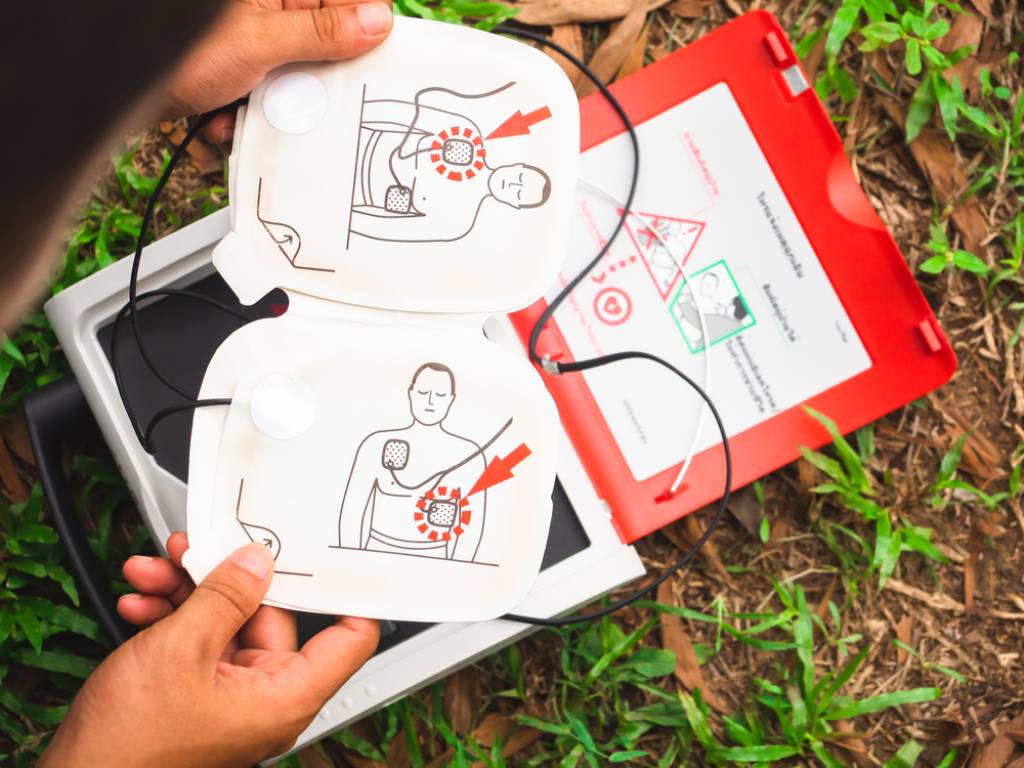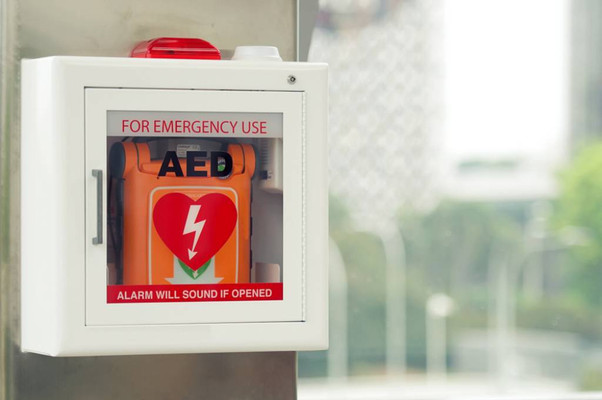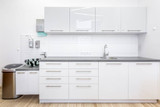Saving Lives with an AED: A Step-by-Step Guide to Proper Usage
An automated external defibrillator (AED) is one of the most important medical devices that nearly anyone can use during an emergency. An AED can help people who have a sudden cardiac arrest and drastically increase survival rates when used correctly.
Even if you’re not a first responder or medical professional, knowing how to use an AED can help you provide life-saving action in case of an emergency. Read on to learn more about what an automated external defibrillator is, situations where it may be needed, and, most importantly, how to use one.
What is an AED?
First and foremost, it’s important to understand what an AED is. The experts at the American Heart Association explain that an AED is essentially a lightweight, portable device that delivers an electric shock through the chest to the heart when it detects an abnormal rhythm.
Sudden cardiac arrest can be deadly, and a person’s chance of surviving drops by 7% to 10% every minute a normal heartbeat isn’t restored. Using an AED to deliver a shock to change the heart rhythm back to normal can drastically increase a person’s chance of survival, especially when combined with CPR.
How Does an AED Work?
An AED is an incredibly smart piece of equipment. According to the FDA, it can automatically analyze the heart rhythm in people who are experiencing cardiac arrest. Then, when appropriate, it delivers an electrical shock to the heart to restore its normal rhythm.
Its ability to analyze the person’s heart rate and deliver shocks when necessary makes it a very user-friendly device.

Who Can Use an AED?
You may be surprised to learn that AEDs can be used by the general public! They are designed to be safe, accurate, and easy to use. While many first responders are trained to use AEDs, formal training isn’t required to be able to use one.
That being said, formal AED training may help you feel more confident if you need to use one.
How to Use an AED
You can find AEDs clearly marked in a variety of public places. If you ever find yourself in a situation where you need to use an AED, follow these steps recommended by the Red Cross.
1. Check Your Surroundings
Checking the scene and ensuring that the person needs help. The Red Cross emphasizes that you should only use an AED when caring for a non-breathing child aged 8 or older who weighs more than 55 pounds, or an adult.
2. Call 911
Ask a bystander to call 911 for help immediately.
3. Turn on the AED
An AED is designed to be easy to use and provide clear instructions. When it’s available, turn it on and listen for the voice prompts that will guide you through how to use it.
4. Remove Clothing and Attach Pads
It’s important to remove all the clothing covering the person’s chest. Also, ensure their skin is dry. If needed, you should wipe their chest dry.
Then, it’s time for the pad placement. Place one pad on the upper right side of the bare chest and the other on the lower left side of the chest, a few inches below the left armpit.
5. Plug in the Pad Connector
You may need to plug the pad connector cable into the AED.
6. Prepare the AED
Now, it’s time to let the AED get to work analyzing the person’s heart rhythm.
It is paramount to make sure no one is touching the person. Say “CLEAR” in a loud voice to ensure no one is touching them.
7. Deliver a Shock
The AED will determine when to deliver a shock. Still ensure no one is touching the person during this step.
The device will give a voice prompt for when to deliver a shock and you will need to press the button that says “shock”. Some AEDs announce a shock is going to be administered and so so without any intervention by the user.
8. Start CPR
After the AED delivers a shock, or if no shock is advised, start CPR. Chest compressions can help further increase a person’s chance of survival.
Find a Certified Refurbished AED
Now that you know how to use an AED, you’re on your way to feeling more self-assured if you ever need to use one.
If you run a medical practice of any other facility with heavy foot traffic, you should consider having an AED on site. At ExamTablesDirect we offer Certified Refurbished Zoll AED Plus Defibrillators. This portable automatic external defibrillator offers a longer shelf life than most defibrillation electrode pads. It also comes with Zoll's Real CPR, which can improve CPR performance by increasing the depth of the compressions.
The Zoll AED Plus can support both adult and pediatric patients. Equip your office with a high-quality, affordable certified-refurbished AED today.
Recent Posts
-
What Is an EKG Machine & How Does It Work?
Technology has consistently played an important role in our ability to understand, diagnose, and …15th Dec 2023 -
Creating a Comfortable and Efficient Exam Room Layout
Comfortable, efficient exam room layouts are at the heart of a streamlined healthcare experience. …22nd Nov 2023 -
Organize Your Exam Room with These Essential Cabinet Solutions
In the healthcare industry, precision and efficiency are of the utmost importance. An organized e …6th Nov 2023




